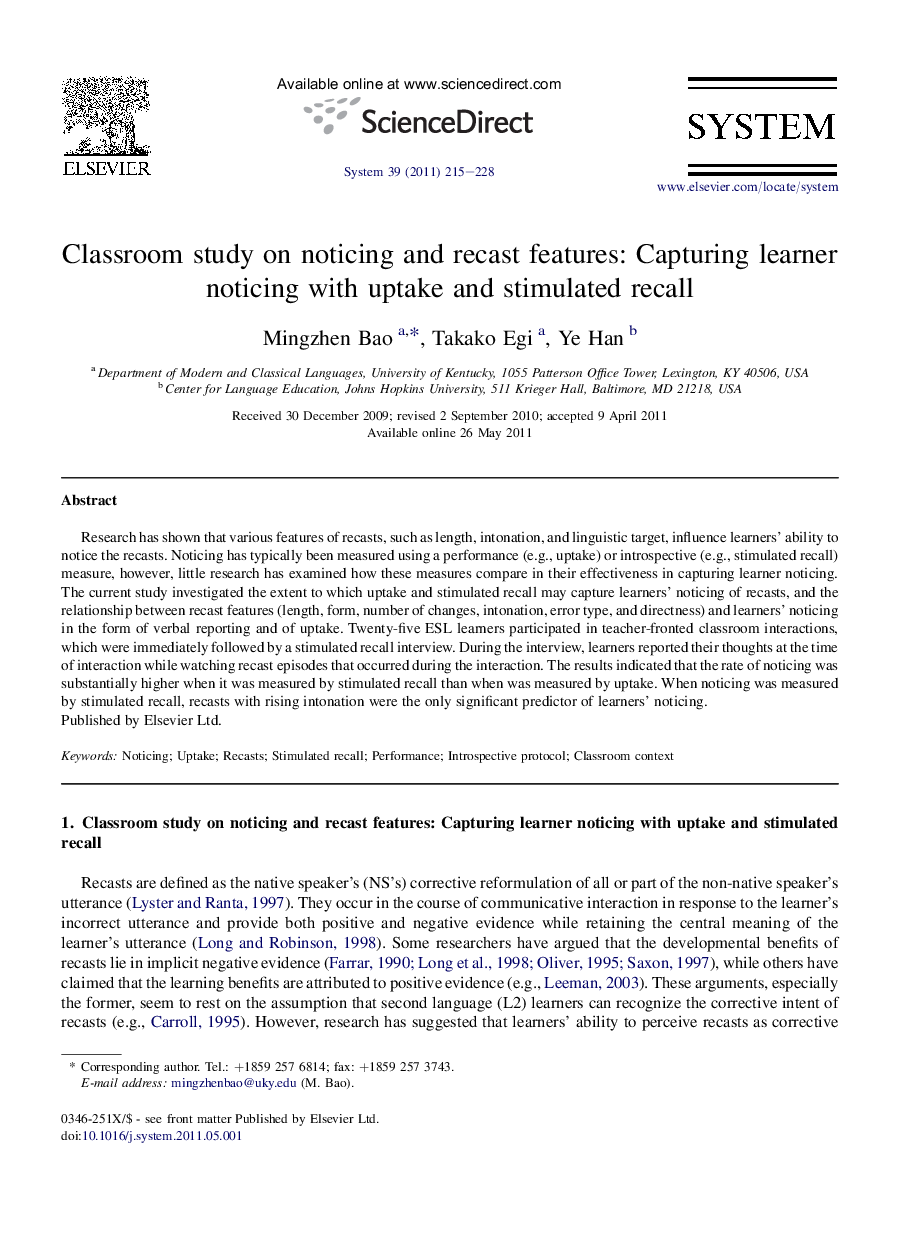| Article ID | Journal | Published Year | Pages | File Type |
|---|---|---|---|---|
| 373561 | System | 2011 | 14 Pages |
Research has shown that various features of recasts, such as length, intonation, and linguistic target, influence learners’ ability to notice the recasts. Noticing has typically been measured using a performance (e.g., uptake) or introspective (e.g., stimulated recall) measure, however, little research has examined how these measures compare in their effectiveness in capturing learner noticing. The current study investigated the extent to which uptake and stimulated recall may capture learners’ noticing of recasts, and the relationship between recast features (length, form, number of changes, intonation, error type, and directness) and learners’ noticing in the form of verbal reporting and of uptake. Twenty-five ESL learners participated in teacher-fronted classroom interactions, which were immediately followed by a stimulated recall interview. During the interview, learners reported their thoughts at the time of interaction while watching recast episodes that occurred during the interaction. The results indicated that the rate of noticing was substantially higher when it was measured by stimulated recall than when was measured by uptake. When noticing was measured by stimulated recall, recasts with rising intonation were the only significant predictor of learners’ noticing.
